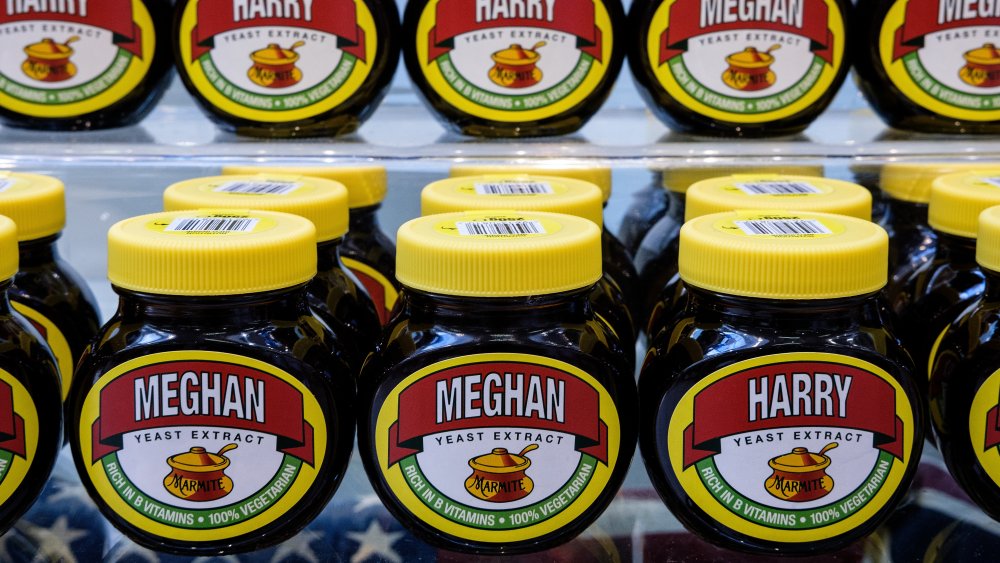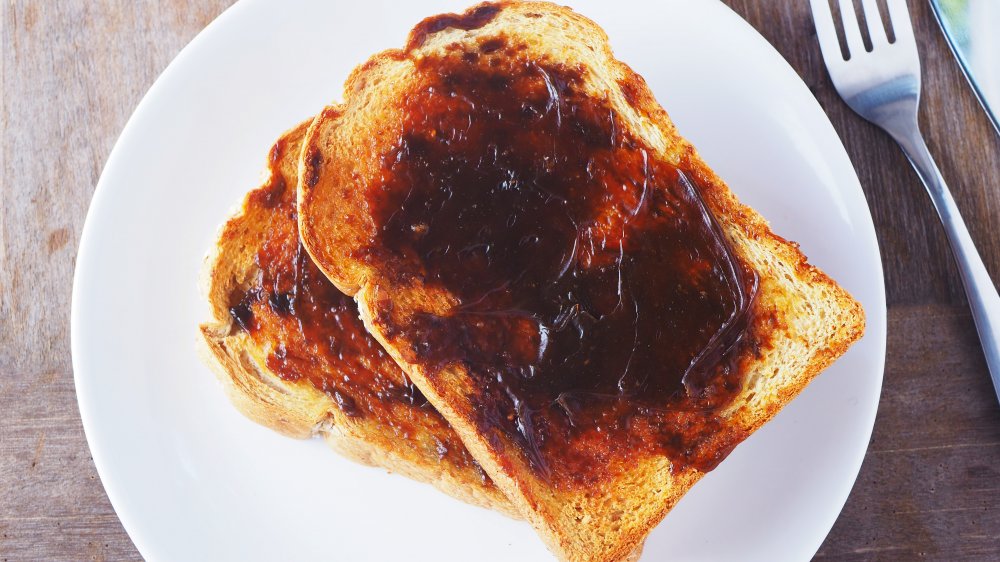What Does Marmite Actually Taste Like?
Marmite (not to be confused with Vegemite) is a food paste made out of yeast, and it's primarily used as a spread — thinly layered — on buttered toast. It's sold by the jar and looks a lot like molasses, but it is nothing like molasses. The first thing most people will notice when they open a jar of Marmite is the smell. That's right, it has a pungent smell. One whiff and you could be filled with a sudden urge to hurl. The products own marketing team came up with its tag line which is "Love it or Hate it." (via Creative Review)
So, what exactly is Marmite and how does it taste? First, Marmite is an invention that happened completely by accident (via BBC). A German scientist named Justus Von Liebig found that yeast, leftover from brewing beer, could be concentrated, bottled, and consumed. The original recipe for Marmite contained salt, spices, and celery, and was later fortified with folic acid, vitamin B12, thiamin, and riboflavin.
Marmite was included in rations for British troops in both World War I and World War II, along with Spam and condensed milk. Today, the spread literally has the royal seal of approval. According to Pure Wow, Marmite has a Royal Warrant. This means Marmite has been supplied to the royal family for at least five years.
Love or hate the taste of Marmite?
The taste of Marmite has been described in a variety of ways. A writer for the blog Takeout recounted how she was introduced to Marmite as a mosquito repellant and later had a friend describe the taste as "toe jam." Sound appetizing? BBC America asked its colleagues to participate in a taste test of the yeasty spread about six years ago. While some people fled, those brave souls who stayed described it as "just salty," "fishy," and "disgusting," and one taste tester even questioned if the product was for industrial purposes, leaving us with the impression that, perhaps, Marmite is an acquired taste.
Still, there are those like Alexia Dellner at PureWow who fall on the other side of the spectrum and love the yeasty spread. Dellner notes that Marmite tastes like soy sauce, but can be used for more than just a breakfast spread. She notes it is a great way to add umami (or savory) flavor to a dish, suggesting its salty flavor can enhance soups, stews, and casseroles. She even challenges readers to try it in a dessert recipe. Dellner's not alone. A writer for The Kitchn referred to Marmite as comfort food, and uses it in fritter dough and when caramelizing onions.
Love it or hate it, the only way to truly know for sure, though, is to try it.

